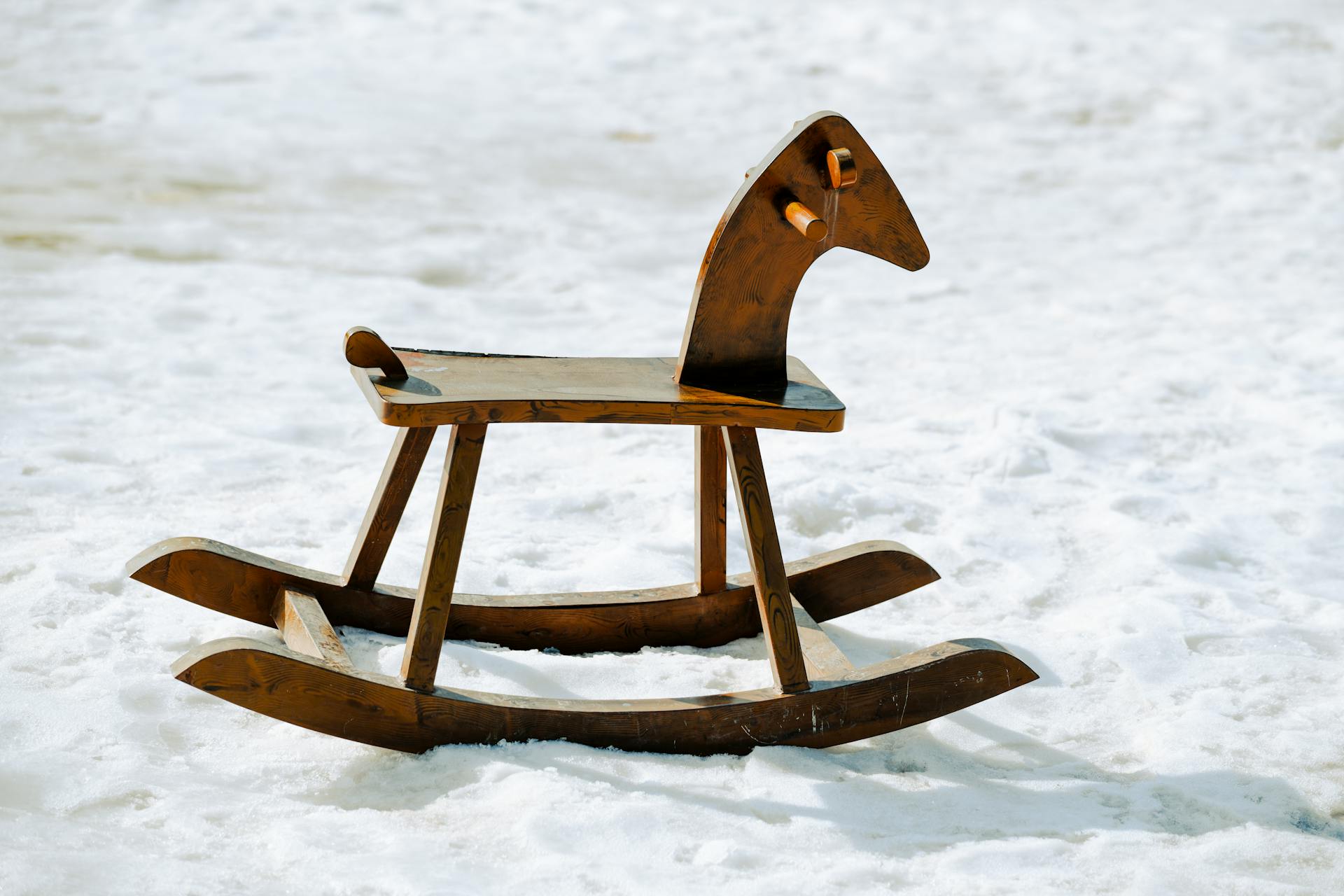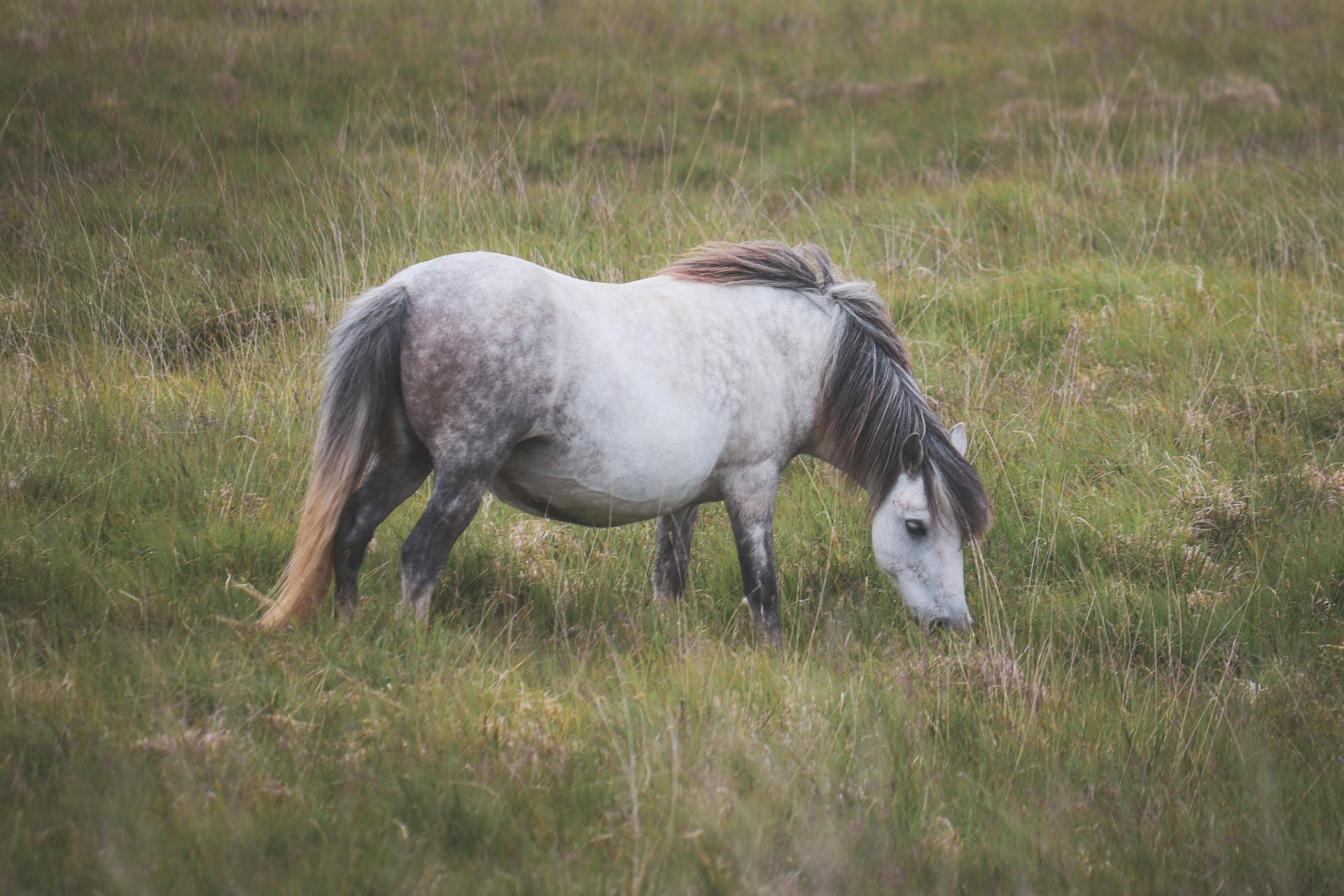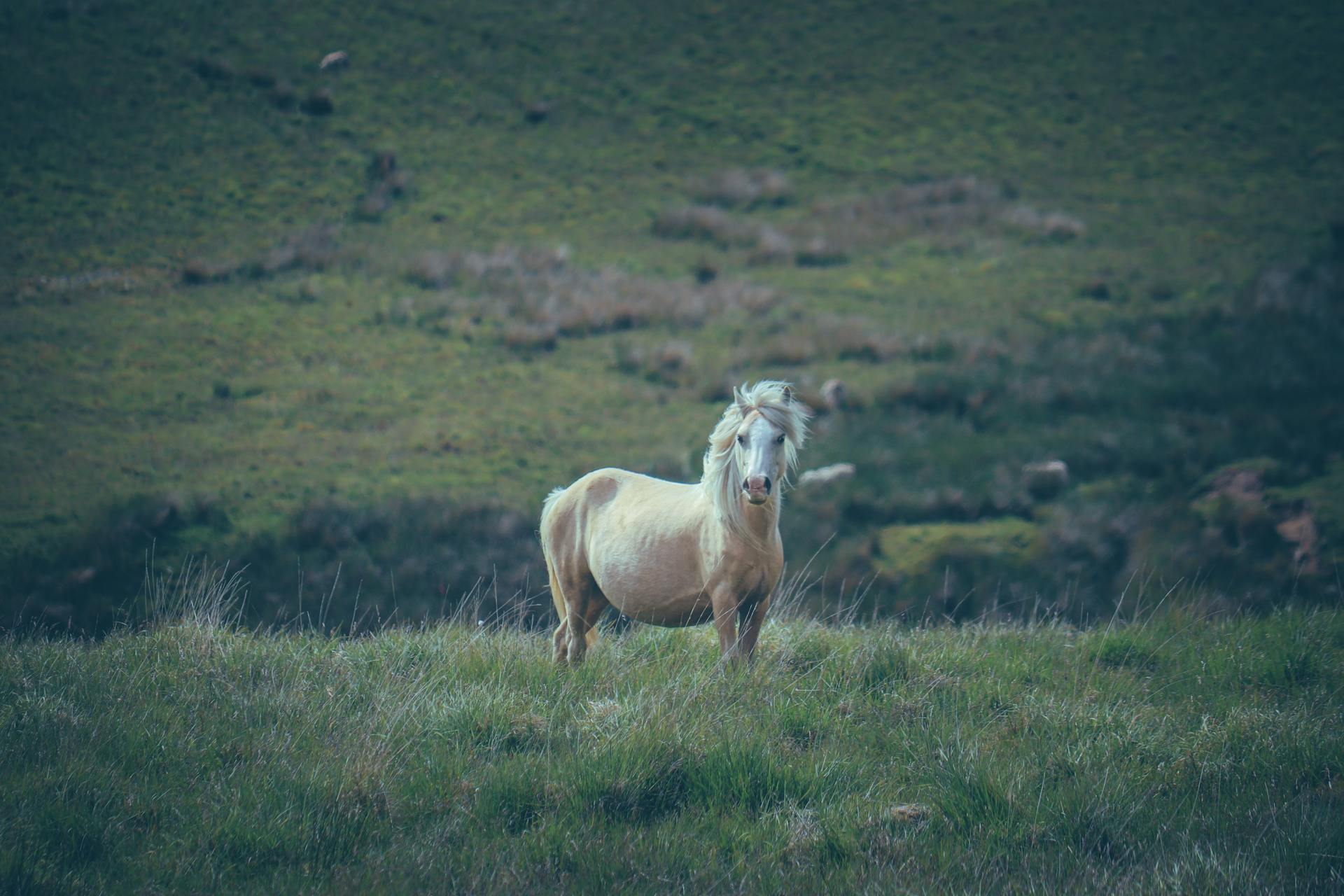
When it comes to training a horse to pivot, there are a few different techniques that can be employed. It is important to find the method that works best for both the horse and the trainer, as each animal is unique and will respond differently to different methods.
One common method of teaching a horse to pivot is known as the pressure and release method. To begin, the trainer applies pressure to the horse's inside hind leg with their own leg, while also applying pressure to the horse's outside rein with their hand. The horse should feel pressure on both sides, which will encourage it to step in and turn its body. As the horse begins to turn, the trainer should release the pressure on both the leg and the rein, allowing the horse to complete the turn.
Another method that can be used to teach a horse to pivot is longeing. This involves the horse being attached to a long line, which is held by the trainer. The trainer then walks in a circle around the horse, while the horse follows behind. As the horse begins to feel the pressure of the line, it will start to turn its body and pivot in the desired direction.
No matter which method is used, it is important to be consistent and patient when teaching a horse to pivot. It will likely take some time for the horse to understand what is being asked of it, but with patience and proper guidance, it can be a fun and rewarding experience for both the trainer and the horse.
What is a pivot and why is it important for a horse to know how to do one?
A pivot is a term used in horsemanship to describe a maneuver in which the horse turns around a fixed point, using primarily its hindquarters. The front end of the horse remains more or less in place, while the hind end swings around in a tight circle. The horse should remain balanced and poised throughout the maneuver, and should not lean on the rider for support.
Pivoting is an important skill for a horse to know for a number of reasons. First, it is often used as a way to turn the horse around in a small space, which can be useful when working in an arena or on a crowded trail. Second, it can be used as an emergency stop if the horse should start to bolt or run off. Third, it can be used to reposition the horse during a performance or competition, such as if the horse should get off-course or need to be facing a certain direction. Finally, it is simply a fun and impressive maneuver that looks nice when executed well.
There are a few different ways to ask a horse to pivot. The most common is to simply apply pressure with the inside leg at the girth and the outside leg behind the girth, and to use the reins to keep the horse's head and neck in position. The horse should then move its haunches around in a tight circle, while keeping the front end more or less in place. Another way to ask for a pivot is to use what is called a half-halt. This is done by first giving a light squeeze with both legs, and then halting the horse's forward motion with the reins while maintaining the pressure with the legs. This can take a bit of practice to get the timing right, but once the horse understands the cue, it will respond quickly.
Pivoting is a relatively simple maneuver for a horse to learn, and it can be a useful tool in a variety of situations. It is important for a horse to be balanced and responsive when pivoting, and to not lean on the rider for support. With a little practice, most horses can learn to pivot quite nicely.
How do you start teaching a horse to pivot?
Pivoting is a movement where the horse moves its hindquarters around a fixed point, while its front end stays relatively in place. It's a useful movement for many dressage and western riding maneuvers, and can also be used to help the horse move out of its way if necessary. Here are some tips on how to start teaching your horse to pivot:
1. Establish a good foundation of basic obedience and ground manners before you start working on any new tricks or maneuvers. This will help your horse understand what you're asking of it and Builds trust between you and your horse.
2. Start with small circles. Lead your horse in a circle around you, keeping its head and shoulder at your shoulder. As it gets the hang of this, increase the size of the circle.
3. When your horse is comfortable circle work, start working on halts. From a walk, ask your horse to halt, then pivot around so its hindquarters are facing the direction you were originally going. Rewards your horse with praise or a treat when it does this correctly.
4. As your horse gets better at halts and pivots, you can start asking for canter halts and pivots. These are a little more challenging, but can be very impressive when done correctly.
5. Always end your training sessions on a positive note, and be sure to reward your horse for a job well done. Pivoting is a fun and useful maneuver that can be used in a variety of riding disciplines. With a little patience and practice, you and your horse will be pivoting like pros in no time!
What are some common mistakes people make when teaching a horse to pivot?
One of the most common mistakes people make when teaching a horse to pivot is not being consistent with their commands. For example, if you tell the horse to turn to the left, but then turn to the right yourself, the horse will get confused and likely not respond the way you want. Another mistake is not being patient enough. When you first start teaching a horse to pivot, it will likely take some time for them to understand what you're asking. Just be patient and keep at it, and eventually they'll get it!
What are some things you can do to help a horse learn to pivot?
The horse is a prey animal and as such is constantly aware of its surroundings and ready to run from any perceived threat. This means that the horse is naturally distrustful of anything new or different, including people and new environments. In order to help a horse learn to pivot, it is important to work with the horse's natural instincts and create a safe, trusting environment.
Here are some things you can do to help a horse learn to pivot:
1. Establish trust and respect. The horse must learn to trust you before it will feel comfortable enough to follow your commands. Spend time just being with the horse, being quiet and still. Gradually begin to offer the horse gentle touches and scratchings in its favorite spots. Once the horse is comfortable with you, you can begin to introduce new things, such as asking the horse to move its feet or to stand still while you brush it.
2. Go slowly and Reward progress. When you ask the horse to do something new, go slowly and be very clear in your commands. Use gentle pressure and release to cue the horse, and reward it immediately with a treat or a pat when it does what you ask. The horse should always be able to choose to do the new thing or not, and should never feel forced.
3. Be consistent. Horses learn best when they can predict what will happen next. So, it is important to be consistent in your commands and in the way you reward the horse. If you are asking the horse to do something that is difficult or scary, be especially patient and understanding. It may take the horse some time to feel comfortable enough to try the new thing.
4. Be patient. Learning takes time, and horses are individuals just like people. Some horses will learn quickly, while others will need more time and patience. Be prepared to spend some time working with the horse until it feels comfortable and confident with the new skill.
What are some things you should avoid doing when teaching a horse to pivot?
There are a few things you should avoid doing when teaching a horse to pivot:
1. Don't pull on the horse's head or neck. This will only serve to confuse and frustrate the horse, and will ultimately make it more difficult to teach them the desired behavior.
2. Avoid using your voice or body language in a way that could startle or scare the horse. This could cause the horse to associate the pivot behavior with negative experiences, making it less likely to want to perform it.
3. Don't get frustrated if the horse doesn't seem to be getting it right away. Like with any type of learning, it takes time and patience to teach a horse something new. If you get impatient or angry, it will only make the process harder for both you and the horse.
What are some signs that a horse is having trouble learning how to pivot?
A horse that is having trouble learning how to pivot may exhibit a number of different signs. For example, the horse may resist turning in either direction, may start toCOMPASSion towards the handler, or may even stop and refuse to move altogether. Additionally, the horse may exhibit a change in breathing pattern, increased sweating, or increased blink rate. These are just a few of the potential signs that a horse is having difficulty learning how to pivot; if you suspect your horse is having trouble, it is always best to consult with a professional trainer or veterinarian.
What should you do if a horse is having trouble learning how to pivot?
First and foremost, remain calm. It is important not to get frustrated or angry with the horse, as this will only make the situation worse. Instead, try to remain patient and understanding.
There are a few things that you can do to try and help the horse learn how to pivot. One is to make sure that you are teaching the correct way. This means breaking the movement down into small, manageable steps. Start with asking the horse to move their shoulders first, and then slowly add in the steps of turning the hips and legs.
Another thing that you can do is to use a variety of aids. This means not just relying on the reins, but also using your voice and body language to help encourage the horse. For example, if you are asking the horse to turn to the left, you would use your left rein and also turn your body slightly to the left.
Finally, it is important to be consistent with your aids. This means using the same aids each time you ask the horse to pivot. If you are constantly changing up your aids, the horse will only become confused and it will take longer for them to learn the movement.
If you follow these tips, then hopefully you will be able to successfully teach your horse how to pivot. Just remember to remain patient and understanding, and eventually the horse will get it.
Frequently Asked Questions
What is pivoting and why does it matter?
Pivoting is a process of adjusting the business strategy in order to better match the company’s current product and market conditions. It’s often used when a company recognizes that its original plan isn’t working, or when new strategies become available that could improve its chances of success. When done correctly, a well-executed pivot can help a business achieve a higher level of product–market fit and reach its ultimate goals. Simply put, pivoting is an important tool for companies trying to stay afloat in an ever-changing landscape. Why is pivotting so important? Achieving product–market fit is crucial for any business. If the products or services offered don’t meet the needs of customers, it’s unlikely that they’ll be sustainable over time. This means that it’s essential for companies to constantly assessment their strategies in order to ensure that they remain on track. Unless your products are
What is a pivot table and why is it important?
A pivot table is a data visualization tool used in business, marketing and accounting. Pivot tables enable users to summarize large datasets into a concise and meaningful table which can be consumed at a glance. A pivot table allows you to analyze data in different ways by allowing you to rearrange the information within it. This can help to indicate patterns and insights that may have been previously hidden.
Why is the horse's back important?
The horse's back is an important part of its anatomy because it is where you sit and if the back is uncomfortable or dangerous in any way, this will effect how your horse feels when riding. For example, a horse can be mildly uncomfortable and lack performance, or be very on-edge and dangerous to ride.
What is the most important part of a horse's anatomy?
The most important part of a horse's anatomy is its back as it is where you sit and if painful or uncomfortable in any way, will effect how your horse feels when riding.
What is a pivot and why is it important?
A pivot can be defined as a fundamental change in the direction of your business when you realize the current products or services aren't meeting the needs of the market. When executed perfectly, pivoting your business can lead to increased revenue or survival in the market. A lack of clarity in your strategy, however, could lead to less successful outcomes. Pivoting can take many different shapes and forms, but some tips for executing a successful pivot include: 1)Understanding Your Industry: Knowing your industry inside and out is essential when planning your pivot. You need to know what'shotandwhat'snotinordertocommittotherightactionstotrytovideoorinternetmarketingyourproductsorservices. 2)Stay Up-to-Date on Trends: Keeping up with industry trends is key in order to make sure you're executing your pivot in a way that's relevant and effective. By keeping track of what's popular, you're more likely
Sources
- https://www.pressreader.com/usa/horse-and-rider/20211106/282007560619961
- https://horseandrider.com/how-to/ace-your-pivot/
- https://www.horseillustrated.com/western-horse-training-riding-pivot-676
- https://equinenetwostg.horseandrider.com/how-to/ace-your-pivot/
- https://www.answers.com/zoology/How_do_you_teach_a_horse_to_pivot
- https://www.aqha.com/-/horse-training-tip-exceute-the-pivot
- https://www.youtube.com/watch
- https://gohorseshow.com/2017/09/horse-training-tip-beginners-execute-pivot/
- https://www.entrepreneur.com/growing-a-business/5-reasons-why-pivots-are-crucial-to-todays-businesses/238253
- https://horseyhooves.com/7-common-mistakes-horse-riders-make-how-to-avoid-them/
- https://www.horseforum.com/threads/teaching-a-horse-to-pivot.150475/
- https://www.youtube.com/watch
- https://www.youtube.com/watch
- https://bikehike.org/how-to-teach-a-horse-to-pivot-while-riding/
- https://www.ridinghall.com/why-is-the-back-so-important-in-a-horse/
Featured Images: pexels.com


